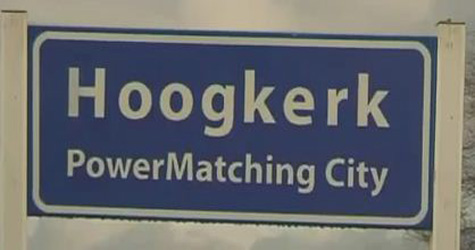Consumers are exchanging power among themselves; PowerMatching City will have follow-up.
Arnhem/Groningen, The Netherlands
A trial involving 25 household in the Hoogkerk district of the City of Groningen – PowerMatching City – has demonstrated that it is possible to create a ‘smart grid’ with a corresponding market model, using existing technologies. The system enables consumers to freely exchange electricity and keeps the comfort level up to par. This is the first time in Europe, and insofar as known worldwide, that the results of a live smart grid community are known at this technological scale. 25 homes were connected with each other as part of the trial and equipped with micro combined heat and power systems (High Efficiency boilers), hybrid heat pumps, smart meters, PV panels, electric transport and smart household appliances. These homes collectively constitute a smart energy system. The project was implemented by the TNO knowledge institute (after the takeover of the ECN business unit ‘Intelligent Electricity Networks’), the software company HUMIQ and the energy company Essent, under the lead of energy consulting and testing & certification firm KEMA. In view of the success, the project will have a successor and the trial will be expanded.
Smart energy grids are required for the transition to an energy system, using renewable energy sources and the associated decentralized electricity generation facilities. This has been demonstrated by numerous investigations, including those conducted by the European Union and the International Energy Agency. The underlying coordinating mechanism in PowerMatching City is based on the PowerMatcher, a software tool that balances energy demand and energy supply. The objectives for three key involved parties were achieved: energy optimization for the end user, reduction in the grid load for the network operator and a reduction in imbalances for the utility.
The second phase of the project will focus on the integration of the market model into the regular energy market processes, such as 1) settlement and billing; 2) expansion of the use of electric transport and associated smart charging services; 3) upscaling of the live lab environment and 4) congestion management at the district transformer.
Thijs Aarten, chairman of the KEMA Board of Directors:
‘It is a good thing that concrete results are now available from a project in which, for the first time, all of these technologies have been linked into a smart network through means of a single market mechanism. The results are very encouraging and of major importance to the transition to a sustainable energy supply.’
For additional background information, visit www.kema.com.
About KEMA
KEMA (www.kema.com), which was founded in 1927, is an independent knowledge-based company that is active worldwide in the energy value chain, and is specialized in high-grade service provision in the field of business and technical consultancy, operational support, measurement & inspections, and testing & certification. As an independent business, KEMA advises and supports government bodies as well as producers, suppliers and end-users of energy, and manufacturers of electricity transmission and distribution equipment. More than 1,700 professionals work at KEMA, which has branches and representatives in over 20 countries around the world.










